Does relaxing by your very own garden fish pond sound like your ideal way to spend a lazy afternoon off? If you’ve been thinking of setting up a fish pond in your garden. We recommend you read these 14 Things to consider before building your pond.
We have all the information you need to get started.
Table of Contents
Here Are Some Things To Consider Before Building Your Pond
Does relaxing by your very own garden fish pond sound like your ideal way to spend a lazy afternoon off? If you’ve been thinking of setting up a fish pond in your garden we have all the information you need to get started.
A garden fish pond is a lovely idea but can be a costly exercise if you make mistakes while setting one up. It is best to do some preparation and research first before getting started to avoid making errors that you have to then go back and fix.
The basic care and maintenance for all garden fish ponds are the same regardless of the size of the pond. You also need to care for the fish. These are ongoing time commitments which you should be aware of before getting started as well – you can’t just dig a hole, fill it with water and then leave it to look after itself.
1. What Kind Of Environment Are You Trying To Create?
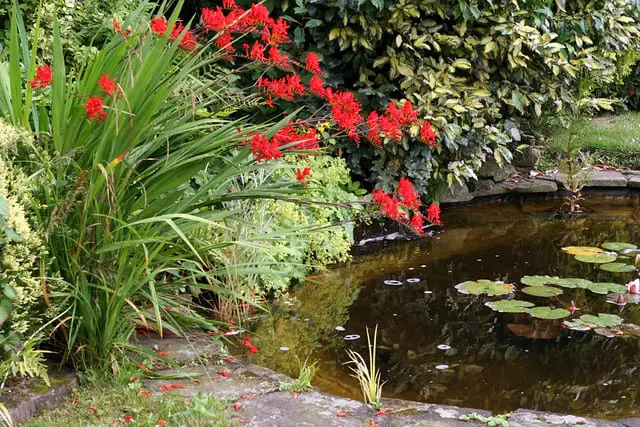
You can create a vibrant fish pond in any kind of garden space really. In a larger garden, you can dig into the ground and build a pond, but you can also buy them completely self-contained to sit above ground or on balconies and decks.
Ideally, your fish should have some protection from the weather as well as some direct access to sunlight, but apart from that, you can introduce a garden fish pond into almost any shape or size of outdoor space.
2. What Size Pond Should You Build?
Depending on the size of the pond, you may need to check with your local laws to make sure you don’t need a permit to build one. You may also need some sort of fencing to protect children as well, depending on where you live.
They are more conveniently located near the house, where you can access running water and electricity.
3. Avoid Nearby Trees
Large tree roots can interfere with a fish pond over time, so think about the trees you are locating it next to as well. Some plants are toxic to fish, so make sure that any vegetation around the pond is safe for them.
You should position your fish pond partially in the sun, but allow it to get some shade as well. Too much sun will encourage too much algae growth, and you won’t be able to see or enjoy your gorgeous fish.
You need to maintain the water temperature to stop your pond from overheating or freezing (depending on what part of the world you live in and what kind of weather you have to face).
Your fish pond should be a whole interactive ecosystem once established. Introduce tadpoles and snails as happy companions for your fish who help to feed on the algae and keep the pond clean as well. You may also find small lizards and snakes around the pond as well as frogs and birds – none of this is bad – this is what having a healthy active fish pond is all about.
4. What Kind Of Fish?
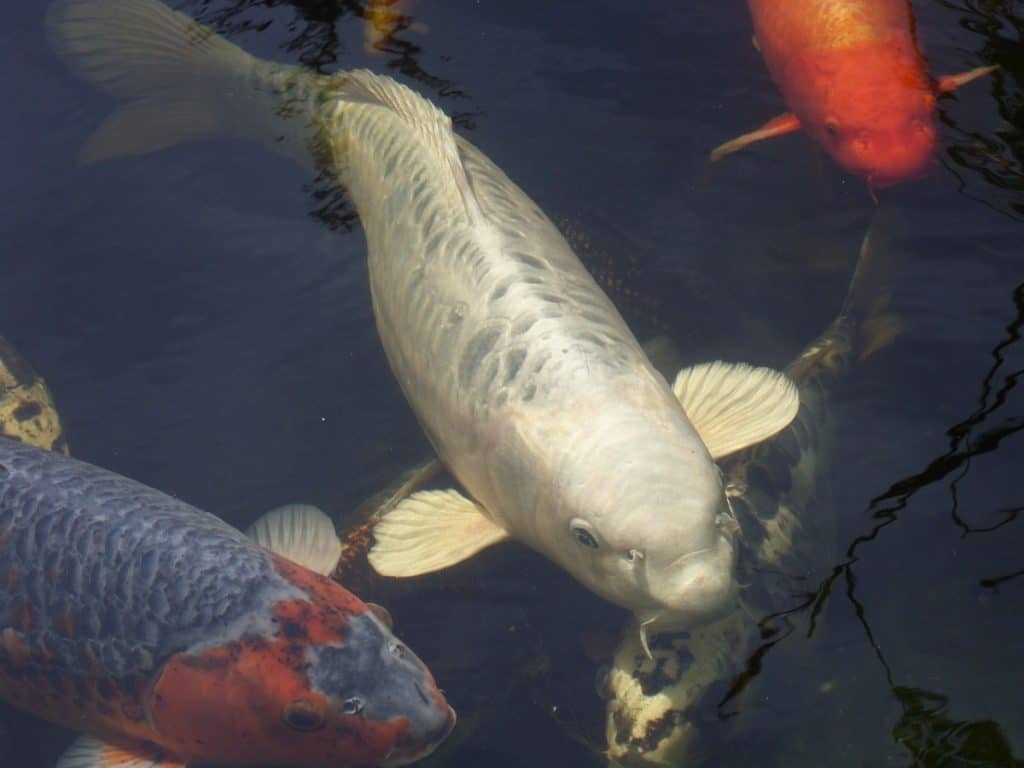
The best fish for your pond will depend on where you live in the world. You should buy fish that will thrive in your garden, so buy ones that like an environment and ecosystem as close to the one provided where you live.
In the same way that you should care properly for fish in an indoor aquarium, you should properly care for those in your pond. Choose the right type of fish for your climate, for the size of the pond and for each other. Not all fish will get along, so check that species are compatible.
Good fish in the UK and similar climates include:
- Goldfish
- Koi carp
- Golden orfe
- Pond sturgeon
- Plecostomus
- Siamese algae eaters
- Mollies, guppies, and minnows.
Check how big the fish will grow. It is best to buy fish that are a similar size to each other, because bigger ones may eat the smaller ones. A good basic rule is that if a fish can fit inside the mouth of another fish, the bigger one may eat it.
You should allow at least two cubic feet minimum space per fish in your pond. You should also leave some extra space to encourage breeding and babies.
Traditional Fish For Ponds
Koi fish are the ones traditionally used in garden ponds and are very beautiful fish. They are on the expensive side, however, so if you are just getting started then you might like to begin with good old goldfish.
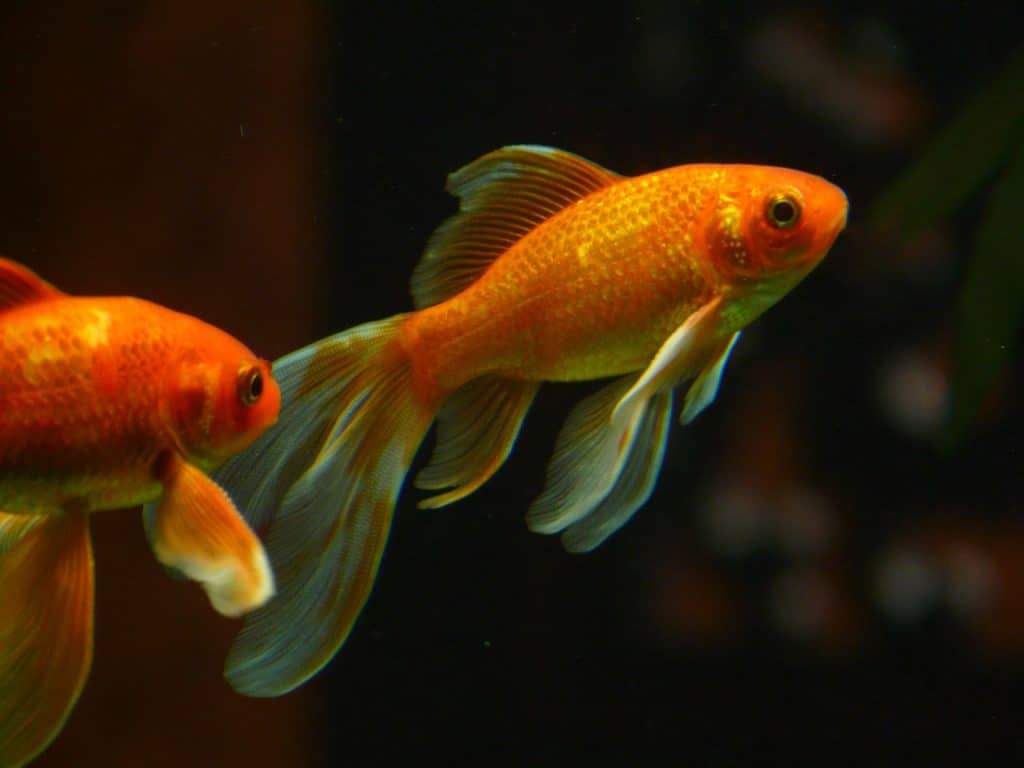
Goldfish come in a variety of colors and patterns and can grow as large as the space they have to thrive in, so can end up looking very impressive. Fantails and black moors and other more delicate goldfish breeds are better off in indoor tanks. For your fish pond choose hardier, faster varieties such as comets and shubunkins.
Minnows are also a good variety of fish for the garden, as are many members of the carp family.
In theory, you will not need to feed your fish in the garden fish pond as they should naturally be able to access what they need in their environment. Many fish pond owners will still feed their fish regularly, however, to make sure that they get what they need.
5. What Kind Of Plants?
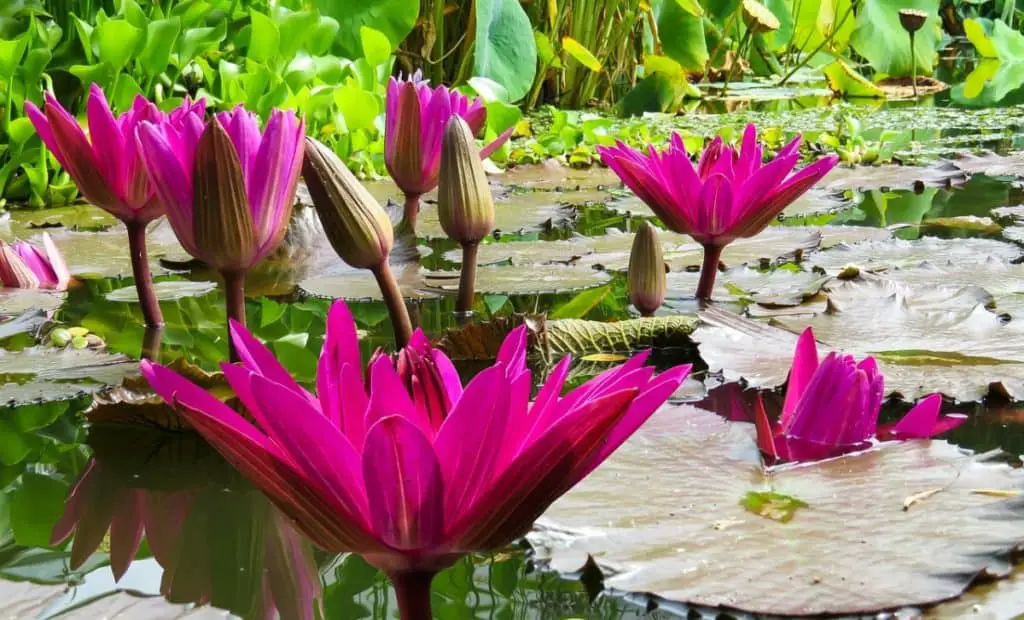
Living plants in your fish pond help to clean the water and add oxygen for your fish. Water plants are best, but many of them are weeds and pests to natural waterways, so make sure they stay contained solely to your fish pond.
If left untended, water plants can go a bit crazy and their roots can take over the pond, leaving little room for your fish. Be prepared to regularly tend to the vegetation in your pond to keep it under control.
Water lilies are gorgeous in a garden fish pond but can be expensive to buy. Also, they need to be planted in soil, which may not work easily in your pond. Some other great plant options include free floaters such as water hyacinths or water lettuce. Lucky bamboo plants bunched together also look great and give the pond a Japanese fish pond feel to your garden.
You can buy baskets for water plants which will hold the roots under the water but away from the liner, allowing you to essentially plant them.
6. Should You DIY Your Garden Fish Pond?
Depending on how handy you are, you can build your own garden fish pond and keep the costs relatively low. There are some good step by step videos to watch on YouTube.
You can buy a pre-formed fish pond base, similar to a carved pool base, but this is one of the costlier ways to go. However, depending on the size of garden fish pond you are looking to create, you can easily create your own hole and cover it with a pond liner or tarpaulin, or submerge a plastic child’s paddle pool or a half wine barrel.
You can also buy pond kits that include everything you need, even ones that let you create water features such as waterfalls.
7. Container Ponds
If your yard is too small for a liner fish pond or large Koi pool then consider a small but beautiful container pond.
Some are big enough to hold a small selection of goldfish. Others are called natural pools. These contain plants and wildlife but are not big enough for fish.
Below is a good example of a container pond:
Aquascape Aquatic Patio Pond Water Garden with Bamboo Fountain, 16-Inch | 78197
Features
- Create a beautifully planted container water garden in almost any setting -- no shovel required
- Kit includes high-quality poly-resin pouring bamboo fountain, pump, and plumbing components
- Square shape with textured gray slate finish; can be used indoors or outdoors
- Won't fade or chip; ages like real stone
- Measures 16 inches square; can be used indoors or outdoors
8. Check For Underground Pipes Before Digging
Before digging anywhere in your garden make sure that you are nowhere near underground pipes, electric cables, telephone wires, etc. Choose an area of your garden without too much slope.
If you’re in any doubt check your property deeds or the local authority for more information on the pipe and electricity cables under or near your yard.
9. Where To Position The Pond
While some shade is good, try not to position your pond under deciduous trees, or you will spend many months of the year clearing fallen leaves out of the water.
The more fish you intend to have, the more likely you will need an aeration and filtration system, and possibly even a heating system, so you may need to be close enough to an outdoor electric outlet. A water pump will put air in the water as well as stopping it from freezing during colder months. A filtration system will help clean the gunk out of the pond as well.
If you have few fish and lots of living plants you may get away with not needing a water pump, but most fish ponds should have one. The water should be aerated at least every two hours. You should buy a water pump that is specifically made for garden ponds, and make sure that you get the right one for your pond size.
You need to be close enough to your tap or hose for regular water top-ups.
10. Protect Your Fish From Predators
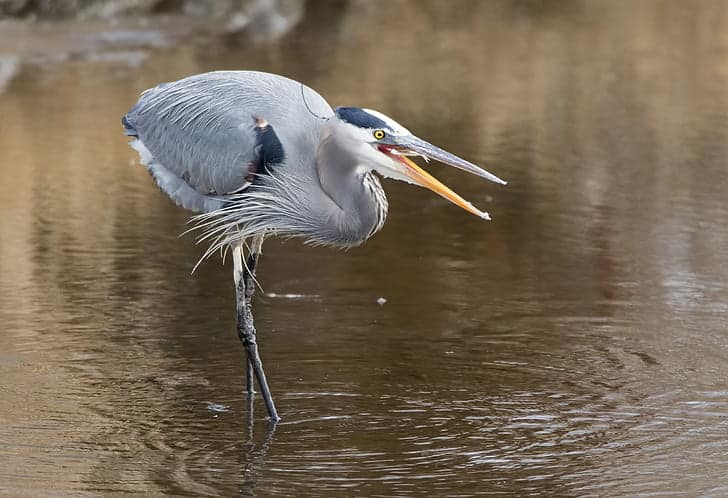
You need to consider protection from predators for your fish, which will vary depending on where you are located.
If your pond is deep enough with steep sides (at least 200mm to 600mm), this can help protect your fish, or you could look into a mesh covering (although some people don’t like how this looks). You may need to protect your fish from cats, possums, raccoons, birds and more.
You can position rocks and stones around the outside of the pond, but this is more of a pleasing aesthetic than a necessity for the fish.
You need to build the pond and fill it, then treat the water for chlorine as well as for water hardness. Fish in a garden pond need lots of good bacteria in the water to balance their ecosystem properly. Bacteria can take months to develop properly, but you can buy bacteria in a powdered form that you should add while setting up your pond and then once a week for the first month.
11. How Are You Going To Fill The Pond?
When filling up your pond, you can use tap water, but this will need to be aged and treated, or you can use bottled spring water, or even rainwater. The same way you can’t use plain tap water directly for your fish tank, you shouldn’t use it for your garden fish pond.
You need to add water conditioner or chlorine neutralizer to your pond water before adding your fish, as well as every time you change the water, for a number of reasons. Chlorine kills the good bacteria that you want growing in your pond, as well as strip your fish of their lovely protective slime coating that helps keep them healthy.
You should allow the water to age for at least a few weeks before adding any fish. This will also let the healthy bacteria in the water start to grow.
12. When To Add Fish
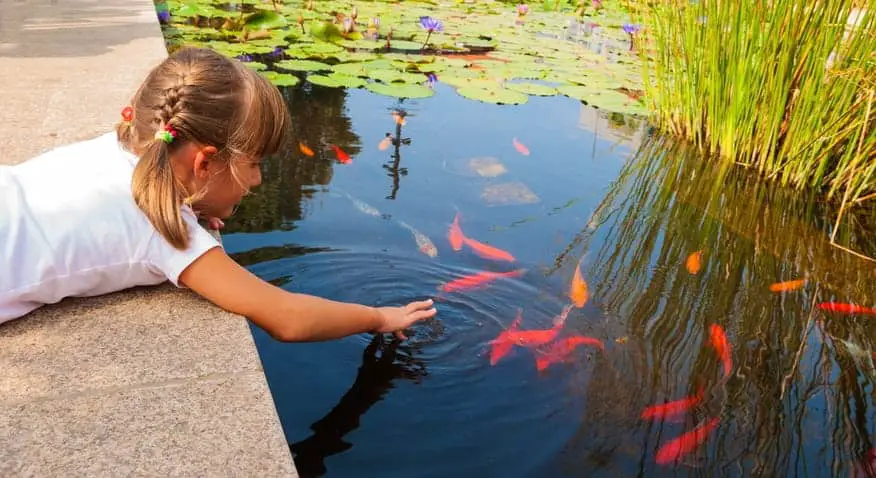
Add fish gradually to let them acclimatize, it is a good idea to add them in pairs or in species groups. Float them in their bags in the pond to allow the water temperature to change gradually. Scoop them from the bag to release them into the pond – don’t introduce the bagged water to your pond because this may bring disease.
Make sure that you cover any electrical equipment to protect it from the elements and the rain.
You may like to cover your pond overnight or in bad weather to protect the fish from predators and stop the water from getting too dirty.
13. Maintenance And Care Of Your Pond

No matter how good the filter system is on your pond you’ll still need to carry out regular maintenance.
Water quality and conditions should be checked regularly to ensure you’re providing the best conditions for your fish to thrive in. If you get the perfect balance between plant life and fish you’ll have a much better chance of keeping a clean and healthy garden pond.
A well-maintained pond will be a healthy pond. Removing any dead leaves and keeping the filter cleaned and fully functioning will ensure adequate water flow.
14. Budget

No matter how much you think your pond will cost you to build…. add a bit more, then Double it!
There is always something extra you want, plants, ornaments, fish, everything costs and you are only human and will want bigger and better things for your pond.
Our advice is to plan your pond carefully ahead of the build. You don’t want to get halfway through building it and then run out of money. It’s not a great feature in your yard to have a half-built, empty or muddy hole.
Price everything before you start and stick to your budget. A basic pond can be built for around $400 if you just want a natural wildlife pond. Fish ponds start at around $600. The extra cost is due to electric pumps, filters lights and liners.
Conclusion: 14 Things To Consider Before Starting A Pond
No matter what size of backyard you have there is always room for a pond. Even the smallest yard could have a container pond.
The most popular ponds are those made from liners or preformed plastic pools. Some of which we have listed below for you. Ones we feel would look great in any garden.
Related Posts
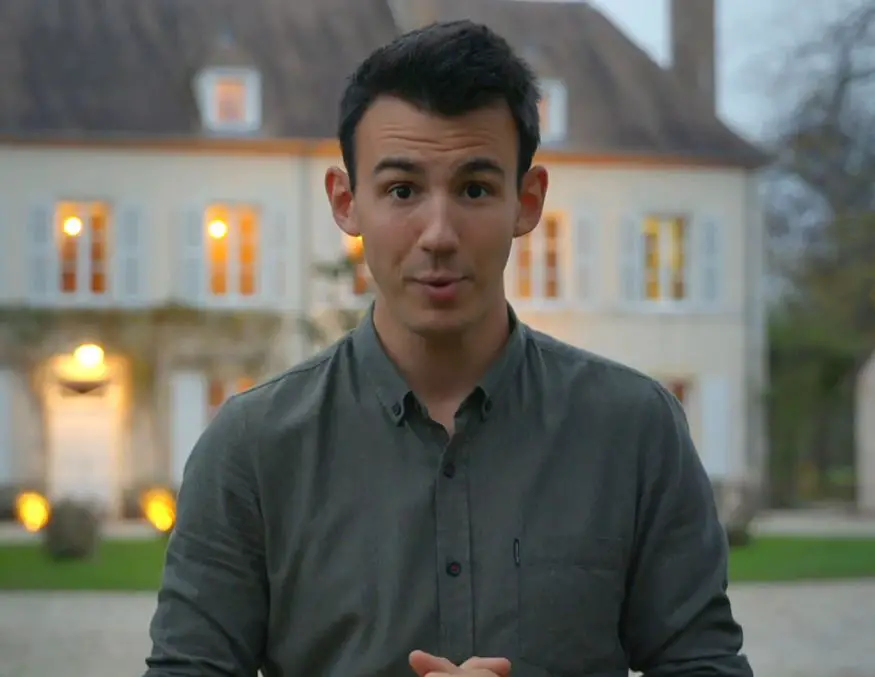
I have been working in the tropical fish industry for over 30 years now and I’m still learning. Everyday is a school day in this hobby. In my spare time I play golf very badly!




